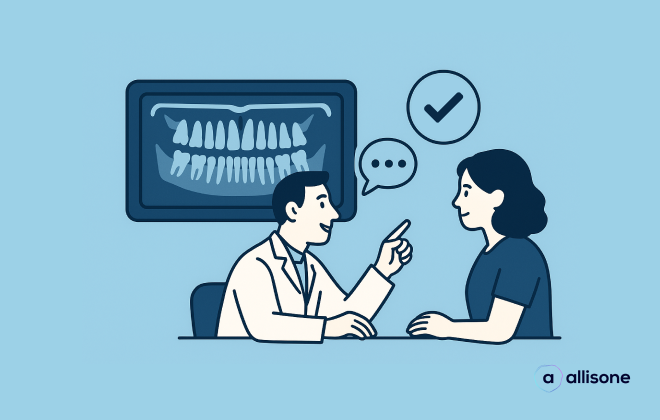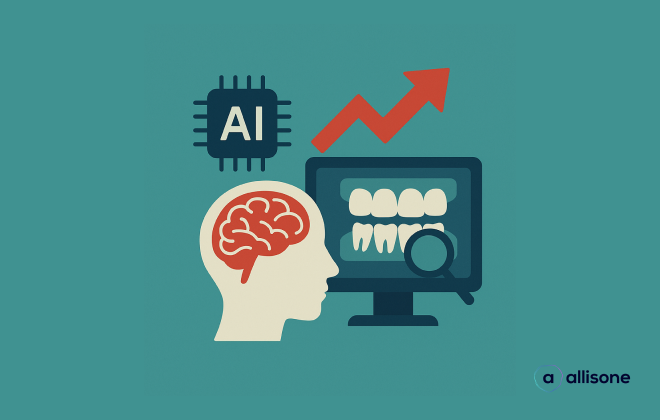
If the fear of the dentist is fading among the population, nearly a third of patients still say they are particularly anxious about consulting, according to a survey conducted in 2017. However, we know that this fear of the dentist discourages consultation, having a very negative impact on oral health.
For a small part of the population, suffering from a real stomatophobia, a behavioral therapy will be necessary. For the majority of patients, it is a simple apprehension, which can be calmed quite easily thanks to an adapted conditioning and, especially, to the words and reassuring gestures of a practitioner.
The first step is to know how to identify patients who are particularly anxious, as most of them do not verbalize their discomfort. Common signs of high stress include sweating, rapid breathing, agitation or apathy. These signs are evidence that a patient needs special attention. Discover our 5 tips for de-stressing your anxious patients.
1) A human and reassuring welcome
Your patients' experience begins when they enter your office. If you can, make sure your patients are greeted by a secretary. A human (and if possible warm) contact and an easy orientation towards the waiting room or the treatment room is a first step towards a more relaxed consultation.
Reassuring your patients can also be done through information: if you use innovative tools or techniques that improve the quality of care, don't hesitate to let them know about it through a display in the waiting room for example. Knowing that you are equipped to provide the best care will reassure many patients.
2) Empathetic and benevolent listening
People who are anxious about the dentist are most often anxious because of a bad past experience: pain during the extraction of a tooth, the feeling of not having received sufficiently clear information about their treatment, a reproachful look or comment from a practitioner when faced with poor dental hygiene leading to significant embarrassment... To reassure an obviously anxious patient, it is important to establish a climate of trust from the first minutes of the consultation. Ask the patient about the origin of this obvious stress. Verbalizing his or her anxiety is the first fundamental step in calming him or her. Knowing the reasons for this sometimes irrational feeling will allow you to adapt your attitude, your speech and, if necessary, your gestures during the consultation.
3) An adapted speech to explain the care
As we have seen, the lack of understanding of treatments is a reason regularly mentioned by patients to explain their fear of the dentist. Whether the treatments are simple or require several sessions, they should ideally be clearly explained.
How long will each session last, how often should they take place, how long will there be discomfort, and when should you come forward if pain persists? What is the origin of the pain, how will the treatment eradicate it? What would be the consequences of not treating it? Why are you suggesting an implant rather than a bridge?
All concrete and easily understandable information should be communicated to your patient: in addition to alleviating stress, better understanding a treatment encourages compliance.
4) Images to illustrate your point
A picture is worth a thousand words. Showing your patient a captioned x-ray, a 3D scan or an anatomical model of a human dentition will undoubtedly allow him/her to better understand the origin, consequences and evolution of his/her oral problem.
3D animations can also be useful: they present the most complex treatment plans in a simple, concrete and effective way. Several solutions exist: they can be integrated into the pages of your practice's website or simply presented in consultation.
5) Artificial intelligence for better and more human care
Making appointments via the Internet, taking dental impressions with a 3D camera, intelligent toothbrushes for more efficient cleaning: new technologies and artificial intelligence are at the service of both the practitioner and the patient.
All the tools that make your exchanges with your patients more fluid and contribute to the awareness of the importance of oral care are assets to improve the image of treatments.
By simplifying your daily work and improving the analysis of your assessments, these artificial intelligence tools also optimize the relationship with your patients.
Articles en lien
Lorem ipsum dolor sit amet, consectetur adipiscing elit.

L’intelligence artificielle au cœur des soins dentaires : témoignage du Dr Paola

Mieux faire accepter les plans de traitement : 4 leviers qui fonctionnent vraiment






